Stories From The Border: Walk a Mile in Their Soles
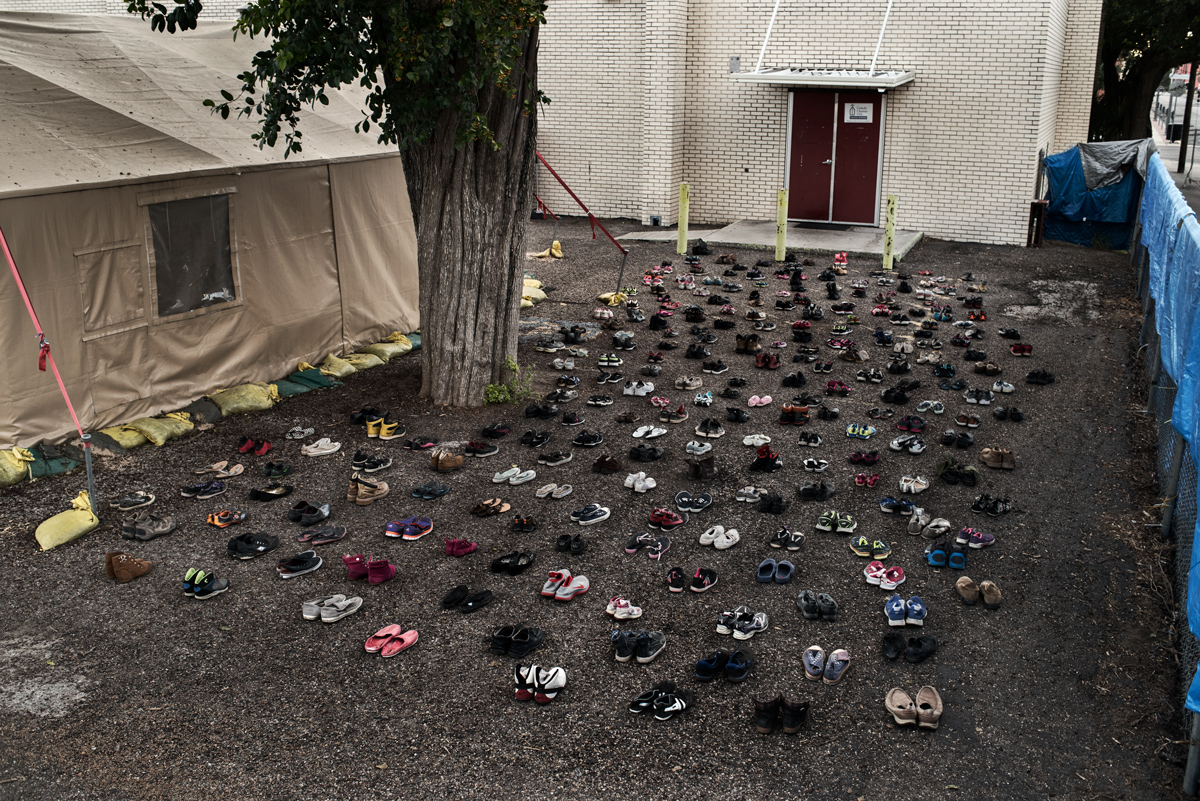
250 soles in front of the Humanitarian Respite Center at Sacred Heart Church in McAllen, TX
A few miles across the Texas-Mexico Border is the Sacred Heart Catholic Church, a historical sanctuary in McAllen, Texas. In a single day, hundreds of people crossing the border might be dropped off at the doors of the church after passing through immigration.
The Humanitarian Respite Center (HRC), whose philosophy is to “restore human dignity,” opened at the church three years ago in order to welcome travelers with a place to sleep, eat, and shower. HRC volunteers give the travelers new clothes and shoes, a fresh start for their new beginning.
Photojournalist Verónica Gabriela Cardenas launched her Traveling Soles photojournalism project in the summer of 2014 when the HRC opened. That summer, she photographed 250 pairs of shoes from the HRC in various places around the Rio Grande Valley.
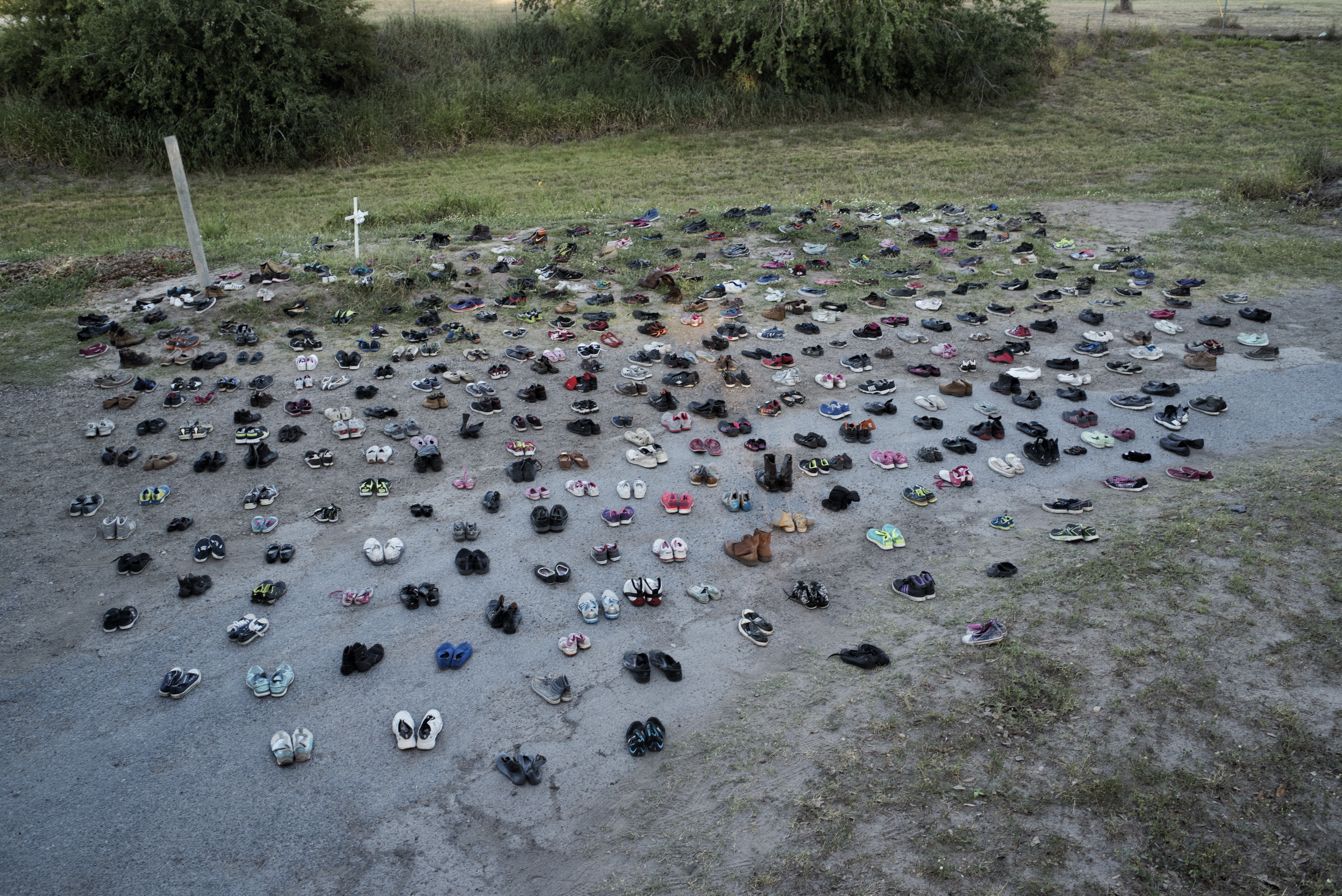
433 Soles visiting the remains of a migrant's unidentified body at the cemetery in Falfurrias, Texas
Through my photography, I aspired to humanize and individualize the migrant experience by sharing just a fragment of their journey.
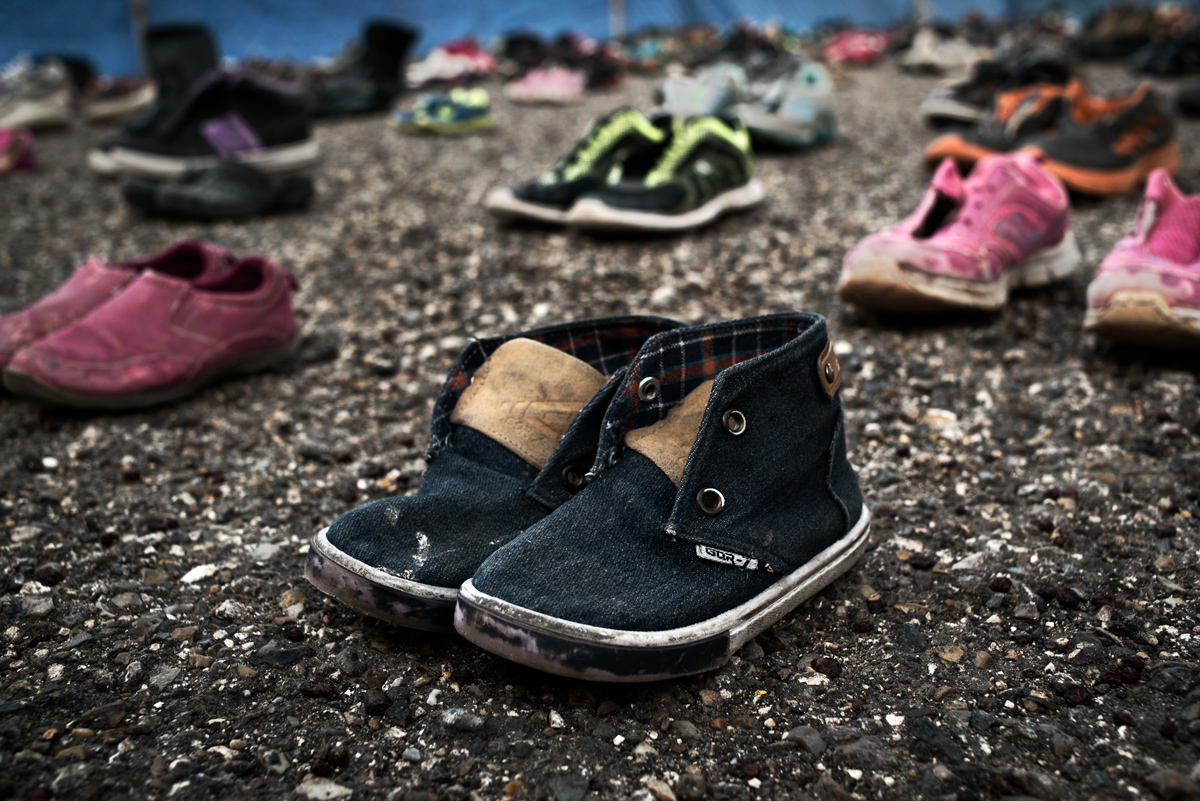
Fernando, Guatemalan, age 4
Fernando and his mother left their country to seek a better life after losing their home and being left by his father. They were able to escape alive after the federales, Mexican police, shot the trailer where they were being transported. He spent his fourth birthday hiding from the Mexican migration agents in the bush lands.
How did you get the idea?
The idea of Traveling Soles came to be during the summer of 2014 when Sister Norma Pimentel, executive director of Catholic Charities in the Rio Grande Valley, opened the Humanitarian Respite Center. At the center I was given permission to photograph the migrant families as long as I did not show their faces. Inevitably, I was drawn to capture their backs, hands and feet.
I was inclined to photograph the feet especially, as I noticed that most of the shoes were missing shoelaces. The shoelaces are removed once they are processed through immigration for safety reasons. I quickly realized that sometimes the migrants would change their shoes for clean ones or new ones and their old shoes were thrown away.
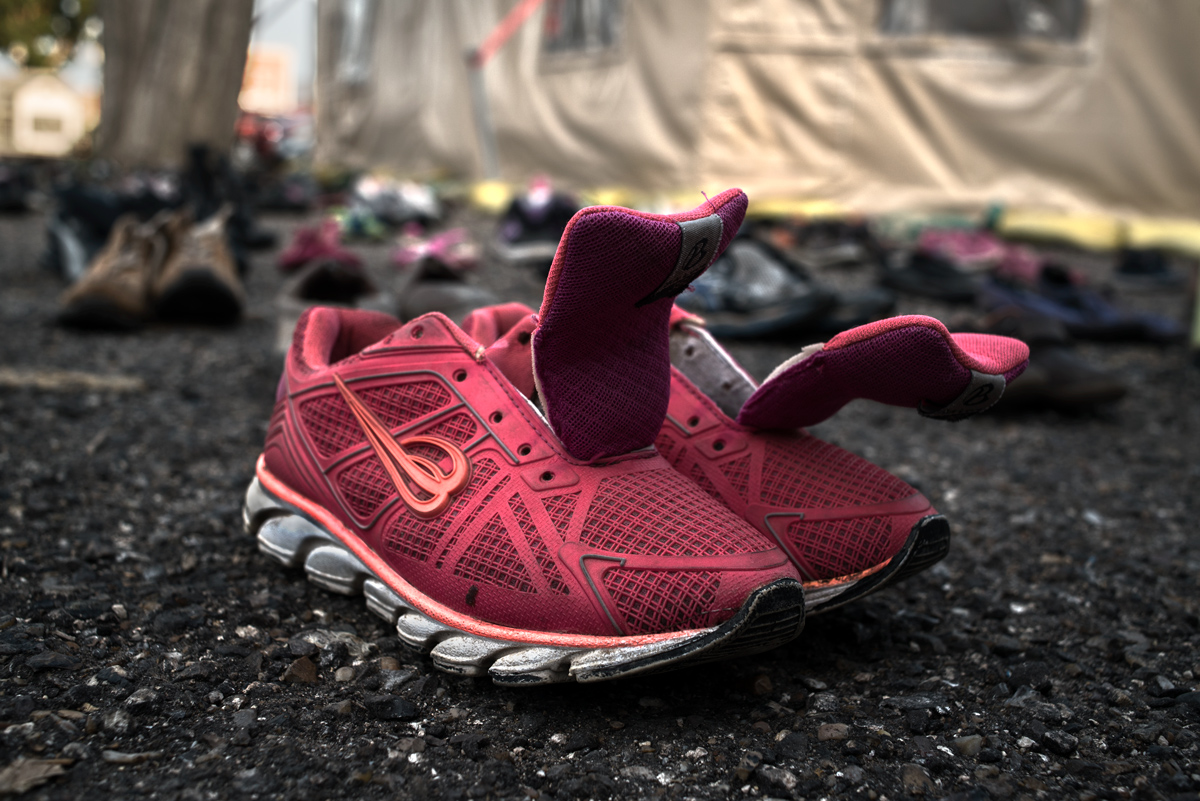
Damaris, Honduran, age 12
Damaris, along with her mother, her pregnant 14-year-old sister, and her two-year-old nephew, fled their country. Her nephew was the product of rape when her sister was only 12 years of age. They fled their country fearing for their lives and boarded La bestia (the beast), the cargo train that many migrants take in order to get to the northern part of México. On the train, Damaris and her family were kidnapped by a Mexican drug cartel and later released after family members paid the ransom.
What is one of the stories of the shoes that you found?
One of the stories that was very heartbreaking was a family that came from El Salvador. The mother’s son had been kidnapped and killed because he refused to join one of the gangs. Fearing for their life, the mother and her kids had to flee their country. While they were traveling through México, they were kidnapped. The kidnappers had begun torturing the mother until her and her kids were able to escape after a month. Unfortunately, this is a recurrent story in México for many migrants fleeing their country.
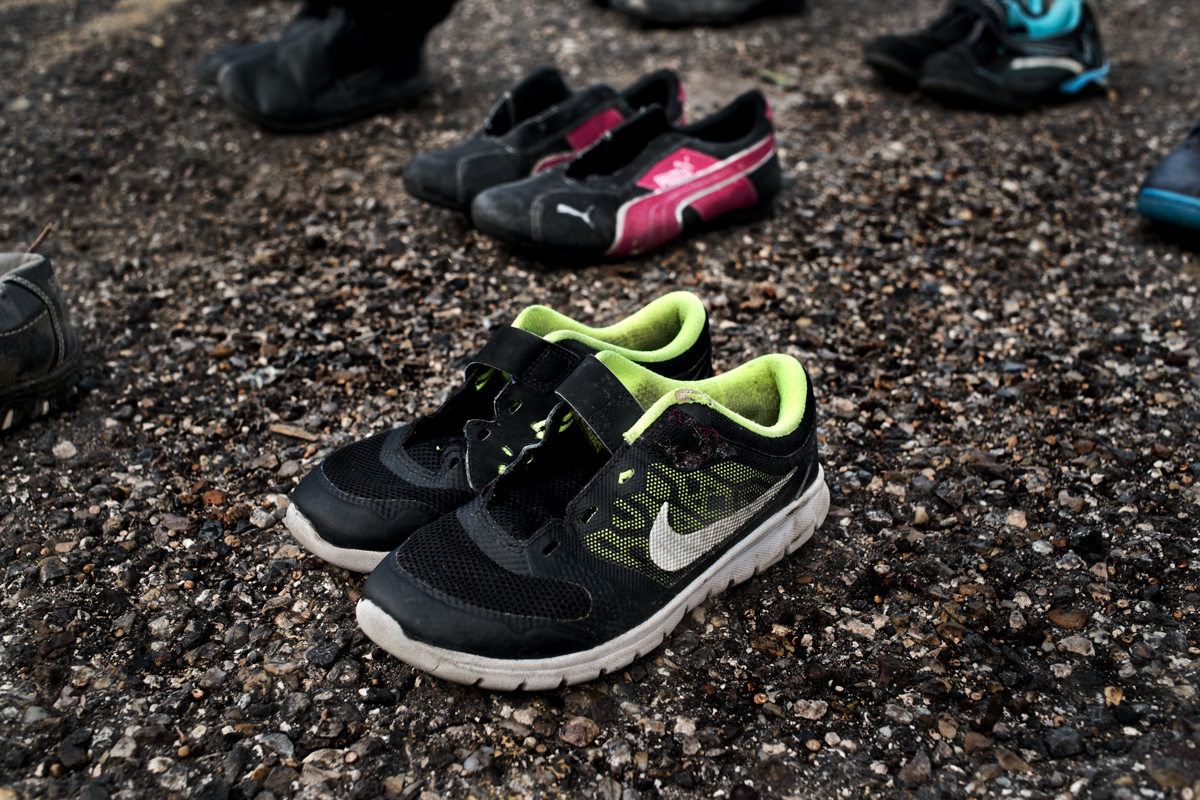
Dacia, Salvadoran, age 7
While Dacia was in the womb, gang members beat her mother. She was born hydrocephalic and with scoliosis. Her older brother was kidnapped and after a year, her mother has accepted the fact that he is dead. While they were traveling to the United States, they were kidnapped by a Mexican drug cartel. It took them a month to finally escape from them but only after cartel members had tortured and peeled off half of the skin from her mother’s foot.
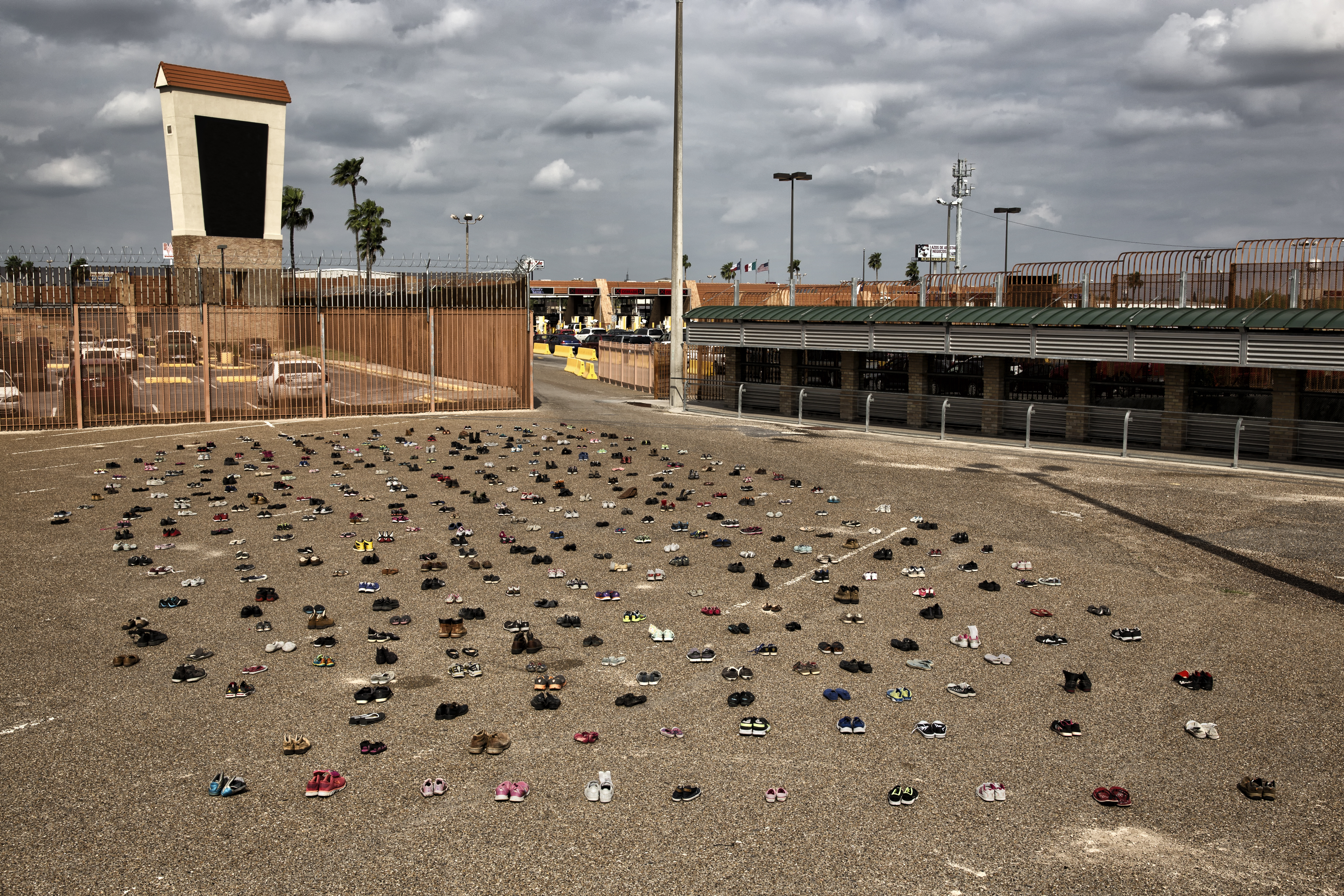
433 soles turning themselves in at the port of entry in Hidalgo, Texas
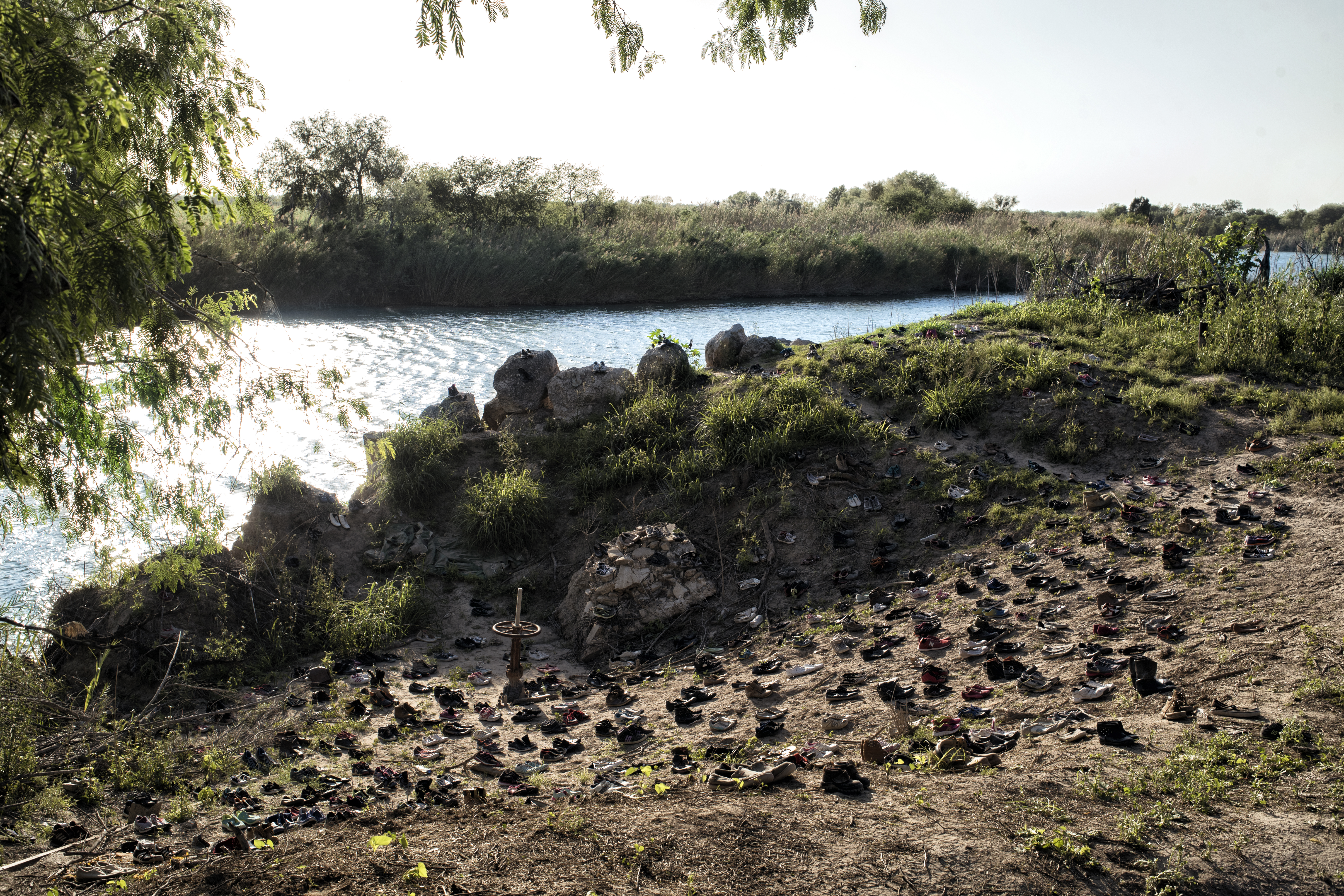
433 soles entering the United States through the Rio Grande River or "El Río Bravo," as known in México
About the Photographer:
Verónica Gabriela Cardenas is a documentary photographer based in the southernmost region of Texas known as the Rio Grande Valley. She obtained a Bachelor’s Degree in Language Arts from the University of Texas Rio Grande Valley. Ever since she was a child, she enjoyed documenting the daily lives of her, her siblings and friends through recordings. Years later, she rediscovered her fascination for documenting, however through a different medium: photography.
Her initial work as a photographer includes nature and street photography. Later she realized she had a deep desire for helping others through her work and that is when she began developing personal projects where she felt more fulfilled.
- Tags: The Humanitarian Respite Center (HRC) Verónica Gabriela Cardenas The Sierra Club Lone Sister Norma Pimentel Catholic Charities Rio Grande Valley Texas
- Categories:










































